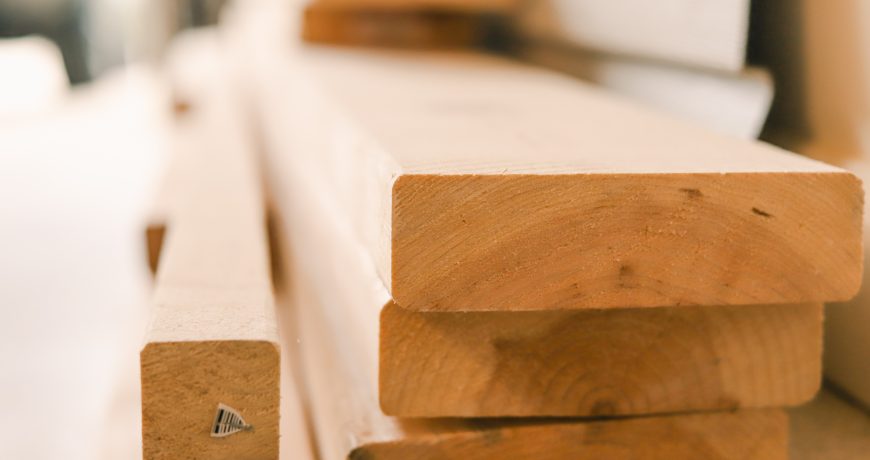Pine vs Cedar Fence: Which Lumber is Right For Your Property?
Choosing between pine vs cedar fence boards for your property is a pivotal decision. Both woods bring their unique strengths to the table – pine with its affordability and versatility, and cedar with its unmatched durability and natural elegance. The biggest difference between the two is dimension stability – for example, pine warps much easier. Resistance to decay is a big difference as well.
We’ll lay out all the key differences between these two types of lumber to help you feel confident picking the right pickets for your fencing project. We’ll compare and contrast cedar vs pine fence boards through the lens of aesthetics, durability, maintenance, and more.
For those leaning towards the enduring charm and resilience of cedar, remember that Viking Fence offers the finest cedar fence pickets in Austin and cedar fence pickets in San Antonio.
Pine vs Cedar Fence: What are the Key Differences and Which is Better?
We do want to be clear in saying that both cedar and pine fencing have their place. Pine fencing is cost-effective and often pressure-treated to enhance its durability.
On the other hand, cedar fencing boasts natural oils that provide inherent resistance to decay and pests. Its aesthetic is one of a kind, and this natural beauty is ultimately why it’s our lumber of choice for all things fencing. Learn more below!
Aesthetic and Design Flexibility
Cedar’s rich, natural color ranges from light amber to deep honey brown, offering a warm, inviting look that ages gracefully.
It accepts stains and finishes well, allowing for various aesthetic options, though many choose to leave it untreated to enjoy its natural beauty. If you do decide to seal a cedar fence, we have a complete guide to help you navigate the project with confidence.
Now, make no mistake – pine is a beauty in its own right. It just has a slightly more uniform grade that can be seen as manufacturer or “boring”, for lack of a better term.
That being said, its physical characteristics make it a great choice for painting, providing a blank canvas for a wide range of colors. However, it lacks the natural color variation and distinctive grain pattern of cedar, and for that reason, we have to give the edge to cedar.
Durability and Lifespan
You’re hoping to build a fence once and never worry about it again on the property. So, how long does a cedar fence last – and how does the pine fence lifespan compare?
Cedar’s natural oils make it resistant to decay, rot, and insect damage, contributing to a longer lifespan with minimal treatment. Untreated cedar can last 15-30 years, depending on environmental conditions. You can often extend this through proper cedar fence restoration, though.
Pressure-treated pine fences can last up to 20 years, but they are more susceptible to warping and cracking over time compared to cedar. They lack the natural resistance to rot and decay that make cedar so durable. Again, the advantage here is undeniably in favor of cedar.
Maintenance and Care
All fencing requires some degree of care, but you don’t want to feel like you’re constantly working on the fence. So, which requires less maintenance – a cedar or pine fence?
Aside from routine cedar fencing cleaning, you won’t have to do much to maintain your cedar fence. The natural resistance we discussed earlier prevents the need for a robust care regimen.
Pine, on the other hand, needs more regular maintenance. This includes staining or painting to protect against the elements and potential decay.
Resistance to Elements and Pests
Cedar wood’s greatest advantage lies in its natural oils, which make it inherently resistant to moisture, decay, and pest infestations such as termites and fungi.
This resistance extends the lifespan of a cedar fence, even in harsh weather conditions, without the need for chemical treatments.
Pine is more susceptible to rot, decay, and pests, especially if you don’t pressure treat it. Pressure-treated pine does offer enhanced resistance due to the chemicals infused into the wood, but these treatments can diminish over time, requiring more frequent maintenance and reapplications to maintain effectiveness.
Environmental Impact and Sustainability
Cedar fencing is often praised for its sustainability. As a naturally durable wood, it doesn’t require chemical treatments for preservation, reducing its environmental footprint.
Additionally, cedar trees are usually sourced from well-managed forests, which contributes to their sustainability.
While pine is a fast-growing, renewable choice, the environmental impact of the chemicals used in pressure-treating pine cannot be overlooked.
These chemicals can have long-term environmental effects, especially if not handled or disposed of properly.
Cost Comparison
You should never shop for a fence based on price alone, as you typically get what you pay for. This is the boundary safeguarding your property, and its aesthetic says a lot about your home – it’s worth investing in quality.
That being said, cedar is typically more expensive upfront compared to pine, due to its natural qualities and durability. However, its longer lifespan and lower maintenance requirements can make it more cost-effective in the long run.
Pine is generally more affordable initially, making it an attractive option for budget-conscious homeowners. But, the additional costs for maintenance, treatments, and potential early replacement should be factored into the overall cost analysis. You may end up paying more in the long run.
So, Which is Right For Your Property: Pine vs Cedar Fence?
You may already be leaning one way or the other in regards to pine vs cedar fence at this point. If not, let’s make it crystal clear which we feel is better.
Choosing between pine and cedar for your fencing really boils down to balancing cost, aesthetics, and longevity. Pine offers an economical option with reasonable durability, especially when pressure-treated.
However, cedar stands superior due to its natural resilience against elements and pests, requiring less maintenance and providing a longer lifespan.
Cedar’s aesthetic appeal, with its rich color and grain, is unmatched. While pine is budget-friendly, cedar’s durability and low maintenance make it a more cost-effective and environmentally friendly choice in the long run.
For a balance of beauty, sustainability, and value, cedar is often the better choice for your property. And if you’re looking for cedar fencing in Texas, your search ends here at Viking Fence!
Trust Viking Fence For Cedar Fencing in Texas!
If you’re in agreeance that cedar fencing is the right choice for your property, take the next step to bring your cedar fence to life with Viking Fence.
We’ve been the trusted choice here in Texas since 1972, and are eager to provide quality cedar fencing solutions that align with your vision and add lasting value to your property.
We offer exceptionally thick pickets for unmatched durability and stability. Available in various grades and sizes, they cater to diverse fencing needs.
Their natural beauty, characterized by a rich hue and intricate grain, enhances any setting. Additionally, these cedar boards resist decay and pests, thanks to their natural oils, making them a sustainable, long-term investment.
So, reach out today to learn more as we draw our comparison of pine vs cedar fence to a close!
Wrapping Up Our Comparison of the Cedar vs Pine Fence
In our comparison of cedar vs pine fence boards, we’ve seen that each wood has its strengths. Pine offers affordability and a blank canvas for paint, while cedar excels in durability, natural beauty, and low maintenance.
Cedar’s resistance to decay and insects, coupled with its sustainability, makes it a superior choice for those seeking long-term value and aesthetic appeal.
Regardless of which material you go with, though, the importance of sourcing high quality fence boards cannot be expressed enough. So as we wrap up our guide to pine vs cedar fence boards, remember that you trust Viking Fence for your fencing needs in Texas.
Embrace the elegance and resilience of cedar with Viking Fence today by getting in touch to learn more about our selection and what we can do to secure your property!

